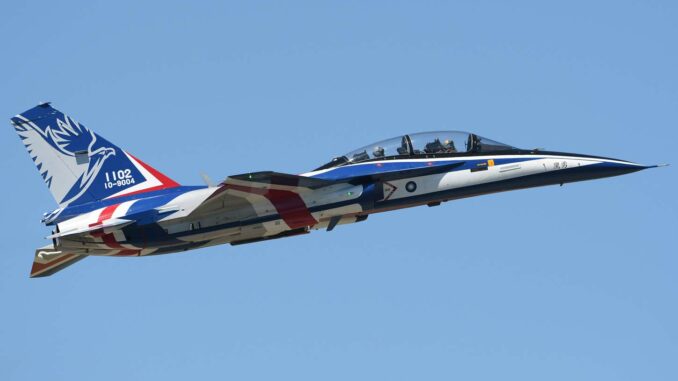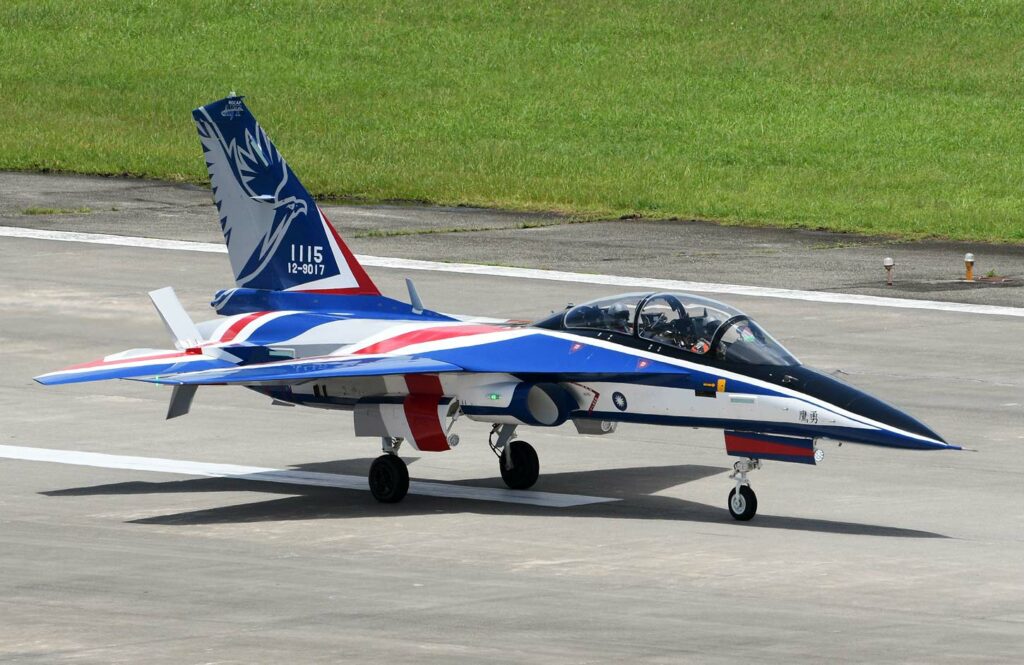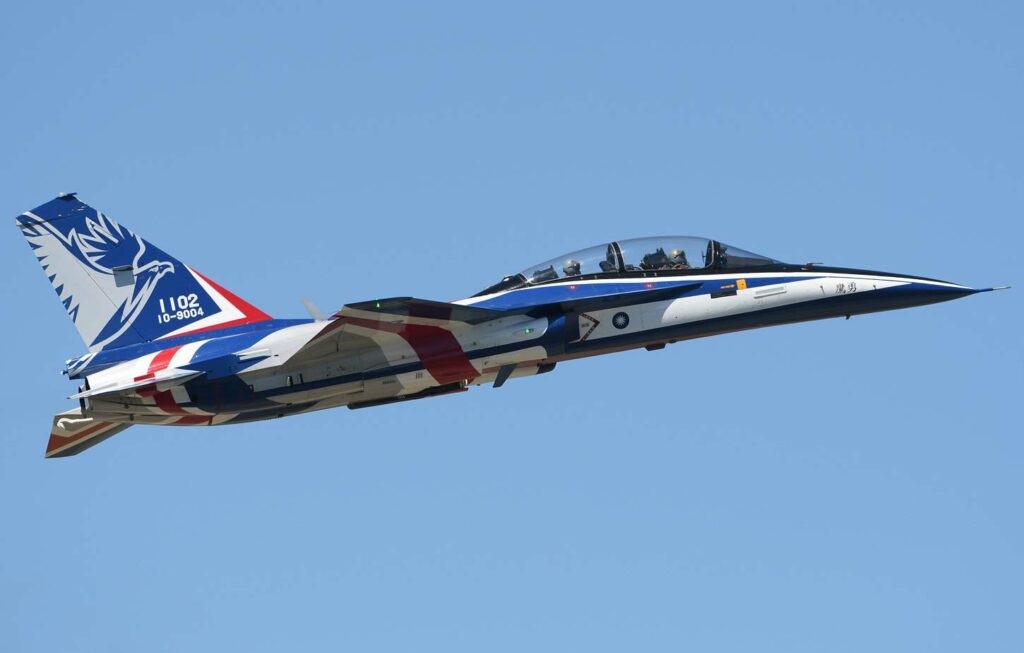
Taiwan is renewing its air fleet, replacing the aging AT-3 and F-5 jets with the Brave Eagle, a home-grown advanced trainer. This change marks a turning point in Taiwan’s pilot training strategy and the modernization of its air defense system.
Taiwan is undertaking a significant upgrade of its trainer fleet with the introduction of the Brave Eagle, a locally designed and manufactured advanced trainer. This development is part of a wider strategy to modernize and enhance the capabilities of the Republic of China Air Force (ROCAF).

Replacement of aging F-5 and AT-3 jets:
The F-5 jets, which have long served in combat missions, will be retired by the end of 2023. The RF-5E Tigereye, a reconnaissance version of these aircraft, will continue their surveillance missions until the arrival of the MS-110 reconnaissance pods, which can be fitted on the ROCAF’s F-16s or its future MQ-9B UAVs.
The Brave Eagle: an advanced trainer:
The AIDC AT-3, also known as the Brave Eagle, is an advanced trainer designed to prepare military pilots to fly high-performance fighter jets. The first prototype made its maiden flight in June 2020, and since then AIDC has regularly supplied these aircraft to the ROCAF, which plans to acquire up to 66 aircraft.
Impact on the pilot training program:
With the introduction of the Brave Eagle, Taiwan is simplifying its training program from three aircraft types (T-34, AT-3 and F-5) to just two: the T-34 and the Brave Eagle. This rationalization aims to optimize the training process and adapt pilot skills to the requirements of modern fighter jets.
Future use of F-5s:
Some F-5 jets will be transferred to training units for use in other roles, such as target or aggressor drones. Others will be used as decoys near Taiwanese military airstrips, a strategy designed to strengthen the country’s air defense.
Consequences of fleet modernization:
The transition to the Brave Eagle has several significant implications. Firstly, it demonstrates a commitment to modernization and autonomy in the defense field. Secondly, it demonstrates Taiwan’s growing ability to develop cutting-edge technologies independently, thereby reducing its dependence on foreign suppliers.

Security and defense issues:
This update also reflects Taiwan’s security concerns, particularly in the face of growing regional tensions. Strengthening its training and air defense capabilities is essential to maintaining a strategic balance in the region.
Taiwan’s introduction of the Brave Eagle is a significant step in the modernization of its air force. This change not only represents an improvement in pilot training and an increase in defense capabilities, but also underlines Taiwan’s ambition to become more autonomous in its technological and military developments. As the world watches Taiwan’s defense capabilities evolve, the island continues to play a key role in the Asia-Pacific security dynamic.
War Wings Daily is an independant magazine.